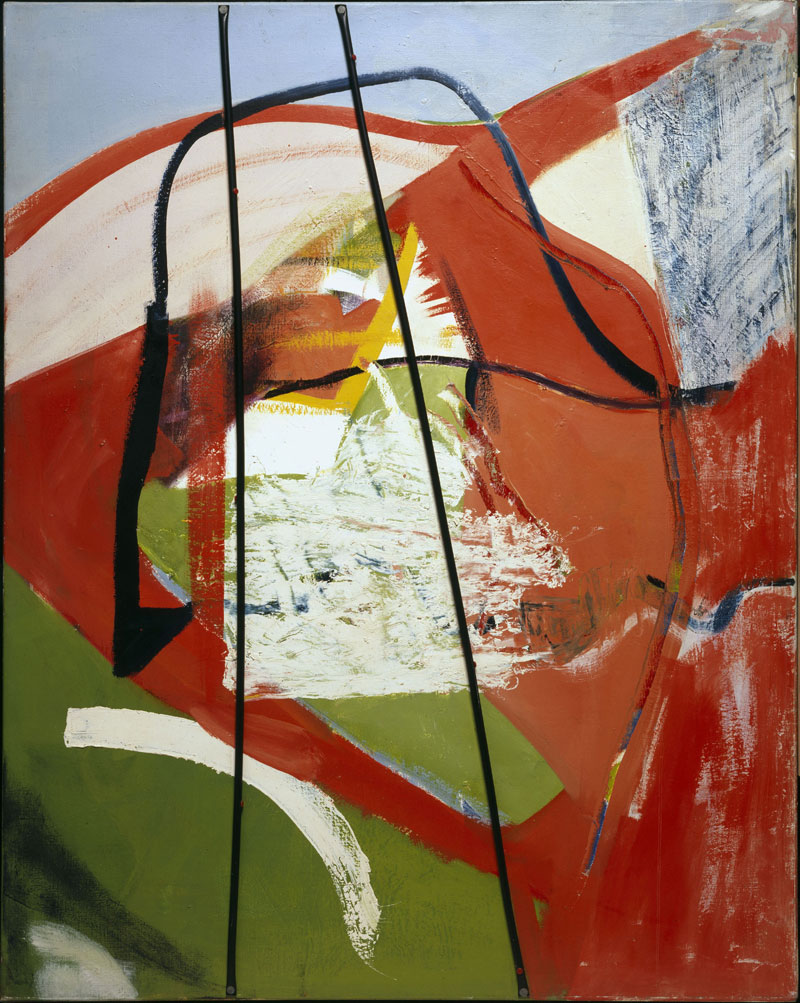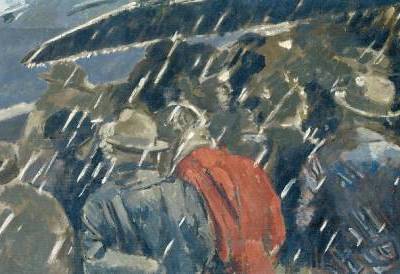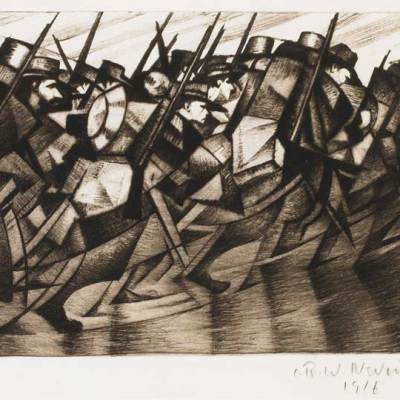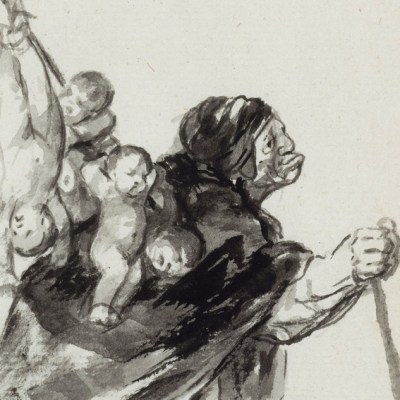From the December issue of Apollo: preview and subscribe here
A couple of years before Peter Lanyon (1918–64) took up gliding, he painted Silent Coast (1957). The deceptively simple painting, executed almost entirely in shades of white, blue, and grey, depicts the westerly edge of the Cornish mainland from the vantage point of its high coastal cliffs. Planes of colour abut each other like competing sea currents or expanding pockets of air – sturdy bubbles that might pop, or simply reshape themselves and persist indefinitely. It is a beautiful and calming image, painted at the tail end of a more anxious period in Lanyon’s career. Over the previous decade the Cornish artist had developed an involved, gestural style of painting to describe his changing physical and emotional impressions within the landscape. It was a difficult process he once likened to ‘climbing the ventilation shaft of a mine’ (the region’s struggling industry was an early artistic preoccupation). Silent Coast feels like a pause for breath at the end of an arduous ascent.
Soon he was airborne. Lanyon took up gliding seriously in 1959, inspired by the sight of the powerless aircraft soaring over the coast near Perranporth airfield. It was a decision of huge personal and artistic significance. Not only did gliding offer him a revelatory new perspective on the landscape he loved, it gave him a means of tying his favoured subject and his hard-won artistic method more closely and comfortably together. In the years that followed his first flight, Lanyon’s painting style loosened and gained in confidence, and he produced some of his best work. It is a sad irony that the activity would cut his life short: he died in hospital in 1964, aged 46, of unexpected complications following a gliding accident.
The Courtauld Gallery’s exhibition, ‘Soaring Flight’, focuses on a series of paintings in which Lanyon dealt directly with the theme of gliding – plus a few, like Silent Coast, that narrowly pre-date and anticipate them. In treating these works in isolation, the curators Toby Treves and Barnaby Wright have set themselves a challenge. For most people, gliding is not a familiar subject; neither, unfortunately, is Lanyon a household name. His complex, semi-abstract style has never been the most accessible, and these paintings represent just one late chapter in his career. But they have carried it off, thanks to the judiciously narrow focus that has become a trademark of Courtauld shows.
That Lanyon might be unfamiliar to people is barely dwelt on: introductions are kept brief. His formative years fly past in a few sentences of wall text, and his fractious relations with the St Ives artists, and later association with the Abstract Expressionists, are mentioned only in passing. This is risky, but it works: Lanyon spent much of his life trying to escape artistic pigeonholes, so it’s commendable that his work is allowed to stand alone.
This does, however, make the first problem – that hardly anyone knows what it actually feels like to fly a glider – more acute. Treves learnt to pilot a glider for his research, and devotes an entire chapter of the catalogue to an evocative description of a solo flight as experienced from the cockpit. Likewise, the gallery texts take care to explain some of gliding’s basic principles – the weather conditions that enable unpowered flight, and the manoeuvres that pilots use to harness them. Lanyon explicitly referred to these in his titles: Solo Flight (1960), Backing Wind (1961), and Glide Path (1964), for example, are all specialist, if also poetic terms. The show’s emphasis helps tease out the more implicit, evasive meanings he worked into the paint itself.
Armed with this knowledge, the differences between Lanyon’s pre-gliding ‘weather paintings’ (which are shown in the first room), and the works he produced after taking to the air (which fill the second), become clear. Long Shore (1962) is a dynamic update of Silent Coast, in which the stillness of the air is felt in the glider’s smooth trajectory rather than as physical stasis. High Wind (1958), with its flurry of brushstrokes, is a picture of buffeting confusion. Thermal (1960), by contrast, describes turbulent conditions from the perspective of a glider who knows how to navigate them. A calm, rising column of warm grey-blue air on the left becomes agitated only where it collides with the cooler fronts of white and pale blue, visually approximating the conditions pilots experience as they use the thermal’s natural uplift to gain height.
Glide Path (1964), Peter Lanyon. The Whitworth Art Gallery, Manchester. Image courtesy the Courtauld Gallery, London

If Lanyon’s paintings capture the complex internal structures of the air, his constructions – three of which are included in this show – bring home its sheer physicality. Blue Glass Airscape (1960) assembles two sheets of translucent glass at angles, one forcing the other up, like tectonic plates, or a tide, or indeed a weather front. Their diagonal thrust suggests the powerful buoyancy of the air, launching the glider forcefully away from the rocks and earth below. These physical elements are carried into two paintings – his first gliding picture, Coast Soaring (1958, made before his first recorded flight), in which curved scraps of metal and wood suggest the motion of the soaring glider, and one of his last, Glide Path (1964), in which two parallel pieces of black tubing create a sense of exhilarating speed.
There are other ways to interpret these layered, expressive works. Lanyon often conflated the human body and the landscape, and does so here in paintings like Rosewall (1960) and Drift (1961), whose pinkish tones mimic Cornish granite, and also skin. His use of the vortex as a compositional tool reflects not just the turning flight of a glider, but also the dizzying late paintings of J.M.W. Turner, whose influence Lanyon acknowledged over that of his contemporaries. In their varying levels of calm and confusion, these paintings evoke fluctuating emotional states as much as changing meteorological conditions. These ideas are brought into the gallery texts, but it is left to the viewer (and the catalogue essayists) to draw out their details.
Whatever the wider significance of these paintings, Lanyon arrived at them by way of flight. He had spent a lifetime exploring the landscape laboriously on foot: now he had found a means of approaching his subject with speed and fluency – of taking in, as he once put it, ‘a mile of history within a gesture’. High wind blows a walker off course, but a thermal enables a pilot to plot a new one. He was in his element.
‘Soaring Flight: Peter Lanyon’s Gliding Paintings’ is at the Courtauld Gallery, London, until 17 January 2016.




